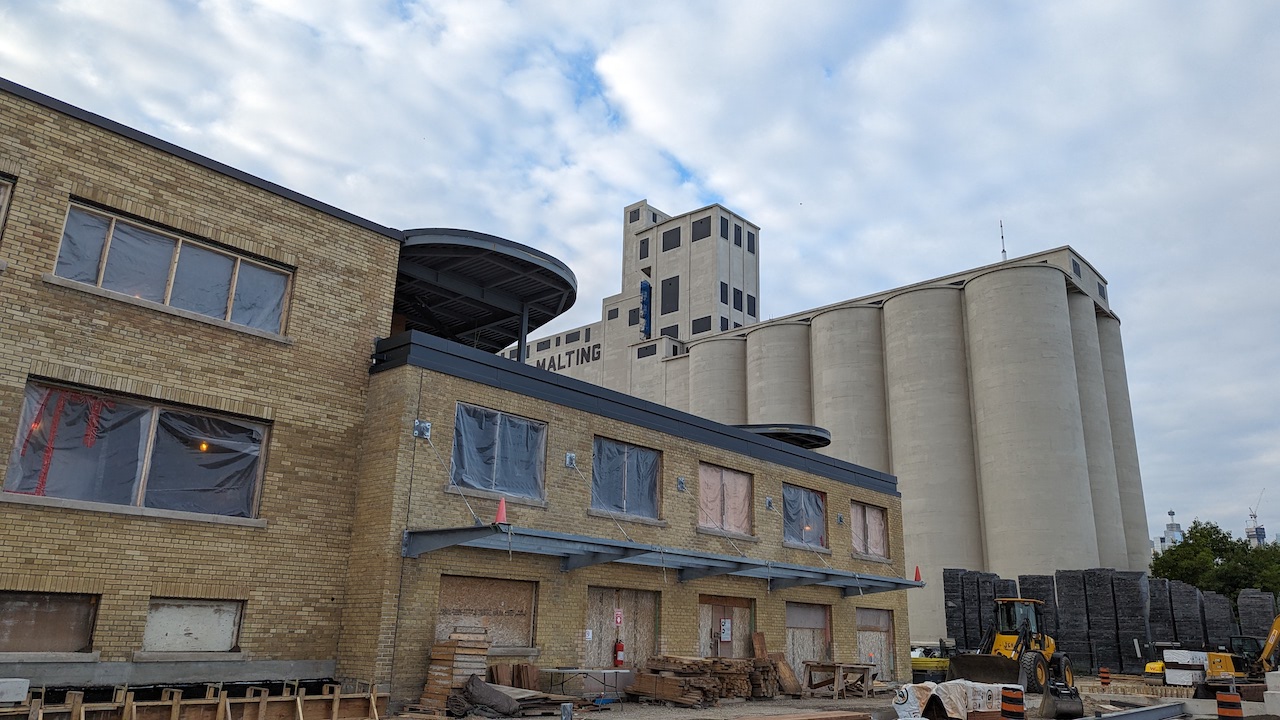- What’s On
- Explore
- Get Involved
- Donate
Help support the Foundation’s mission
- Network Ireland
For Young Professionals
- Donate
- About Us
- Leadership
- Partners & Supporters
- Press
- Ireland Park
A commemoration of Irish Famine Migrants who arrived in Toronto.
- Grasett Park
Honouring selfless Canadians who came to aid of Irish Famine Migrants
- The Corleck
A venue for arts, culture and heritage – Opening 2026.
- Contact Us

A Peek Inside The Canada Malting Silos & Bathurst Quay Revitalization
Home >
July 26, 2024
A Peek Inside The Canada Malting Silos & Bathurst Quay Revitalization
The transformation of Toronto's waterfront from an industrial hub to a livable community has taken decades of planning and construction. Most traces of the heavy industries that once lined the lakefront have long been erased, with only a few monuments left that remind us of Toronto's origins as a port city. Of the remaining structures, two monolithic silos bookending the downtown waterfront have yet to find a purpose in this new context, with the Victory Soya Mills Silos in the east and the Canada Malting Silos in the west still standing strong. These landmarks have been vacant and neglected for decades as the city has grown around them, but fortunately there is significant political will to reuse and revitalize both, and the rebirth of one of them is already underway.
The Canada Malting Silos stand on Bathurst Quay at the foot of Bathurst Street, where many travellers may recognize the hulking concrete mass on their way to and from Billy Bishop Airport. The property is also home to the Corleck Building, a unique Art Deco structure completed in the 1940s, which was originally the administrative offices of the Canada Malting Company. These two structures are what is left of the Canada Malting Company's operations, who abandoned the site in the 1980s. The City has taken over the property since then, with the Corleck most recently serving as offices for PortsToronto, but the silos were left to decay and the remainder of the property left largely covered in asphalt.
Read the full article at Urban Toronto
Related News
-
 February 3, 2025
February 3, 2025Founder Robert G. Kearns Retires; Mark Purdy Named Canada Ireland Foundation Chair
The Canada Ireland Foundation today announced that its Founder, Robert G. Kearns, has retired from his position as Chair of the Foundation’s Board of Directors and as a member of […]